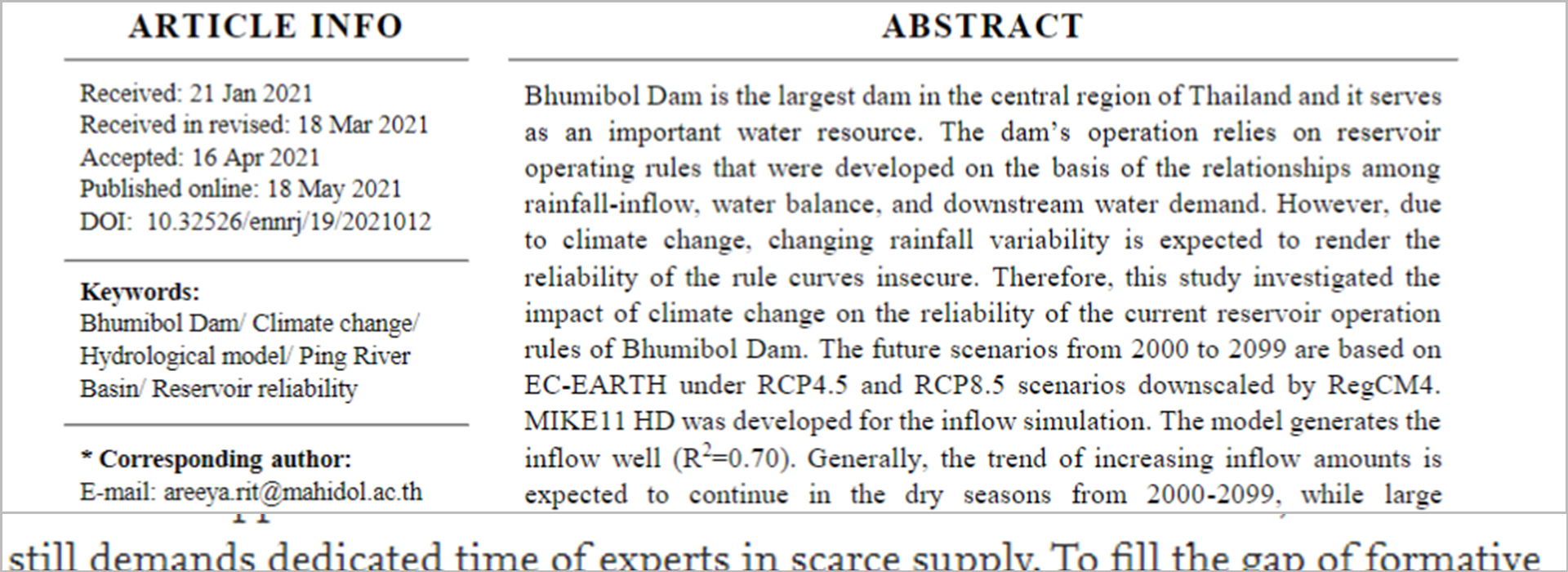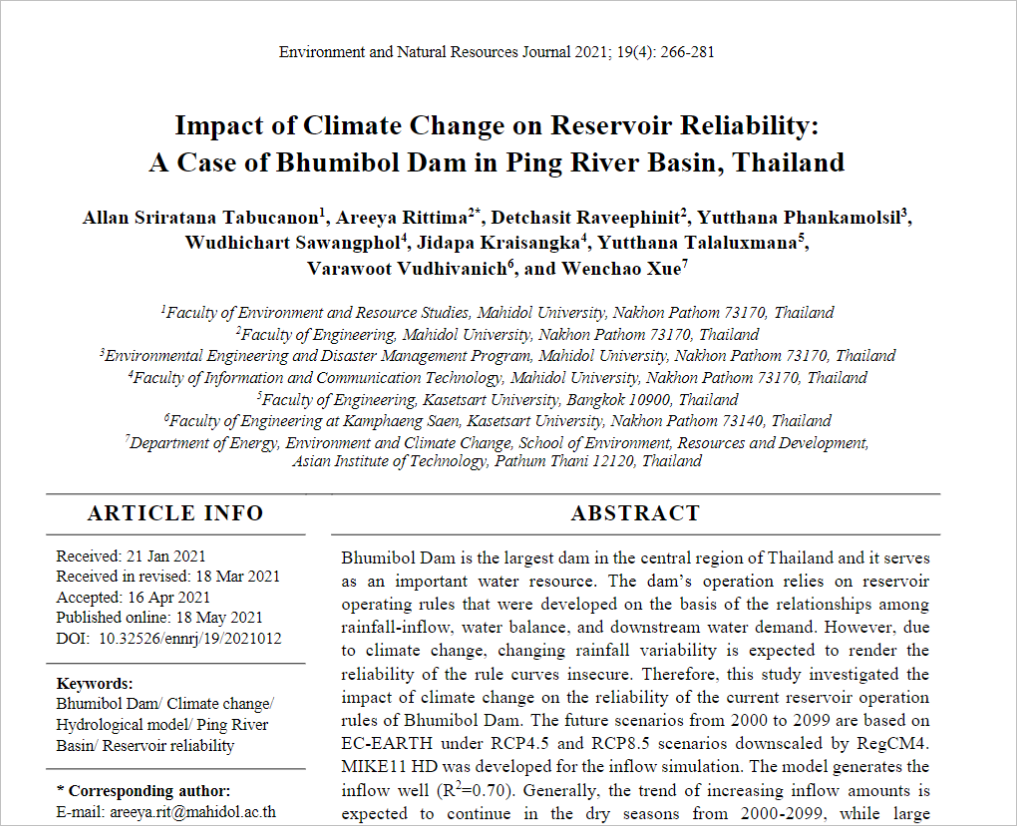Journal /Conference
Environment and Natural Resources Journal
Authors
Allan Sriratana Tabucanon (1), Areeya Rittima (2), Detchasit Raveephinit (2), Yutthana Phankamolsil (3), Wudhichart Sawangphol (4), Jidapa Kraisangka (4), Yutthana Talaluxmana (5), Varawoot Vudhivanich (6), Wenchao Xue (7)
Affiliation
- Faculty of Environment and Resource Studies, Mahidol University, Nakhon Pathom, Thailand
- Faculty of Engineering, Mahidol University, Nakhon Pathom, Thailand
- Environmental Engineering and Disaster Management Program, Mahidol University, Nakhon Pathom, Thailand
- Faculty of ICT, Mahidol University, Nakhon Pathom, Thailand
- Faculty of Engineering, Kasetsart University, Bangkok, Thailand
- Faculty of Engineering at Kamphaeng Saen, Kasetsart University, Nakhon Pathom, Thailand
- Department of Energy, Environment and Climate Change, School of Environment, Resources and Development, Asian Institute of Technology, Pathum Thani, Thailand
Abstract
Bhumibol Dam is the largest dam in the central region of Thailand and it serves as an important water resource. The dam’s operation relies on reservoir operating rules that were developed on the basis of the relationships among rainfall-inflow, water balance, and downstream water demand. However, due to climate change, changing rainfall variability is expected to render the reliability of the rule curves insecure. Therefore, this study investigated the impact of climate change on the reliability of the current reservoir operation rules of Bhumibol Dam. The future scenarios from 2000 to 2099 are based on EC-EARTH under RCP4.5 and RCP8.5 scenarios downscaled by RegCM4. MIKE11 HD was developed for the inflow simulation. The model generates the inflow well (R2=0.70). Generally, the trend of increasing inflow amounts is expected to continue in the dry seasons from 2000-2099, while large fluctuations of inflow are expected to be found in the wet seasons, reflecting high uncertainties. In the case of standard deviations, a larger deviation is predicted under the RCP8.5 scenario. For the reservoir’s operation in a climate change study, standard operating procedures were applied using historical release records to estimate daily reservoir release needed to serve downstream water demand in the future. It can be concluded that there is high risk of current reservoir operating rules towards the operation reliability under RCP4.5 (80% reliability), but the risk is lower under RCP8.5 (87% reliability) due to increased inflow amounts. The unmanageability occurs in the wet season, cautioning the need to redesign the rules.
DOI / Link
- 10.32526/ennrj/19/2021012


